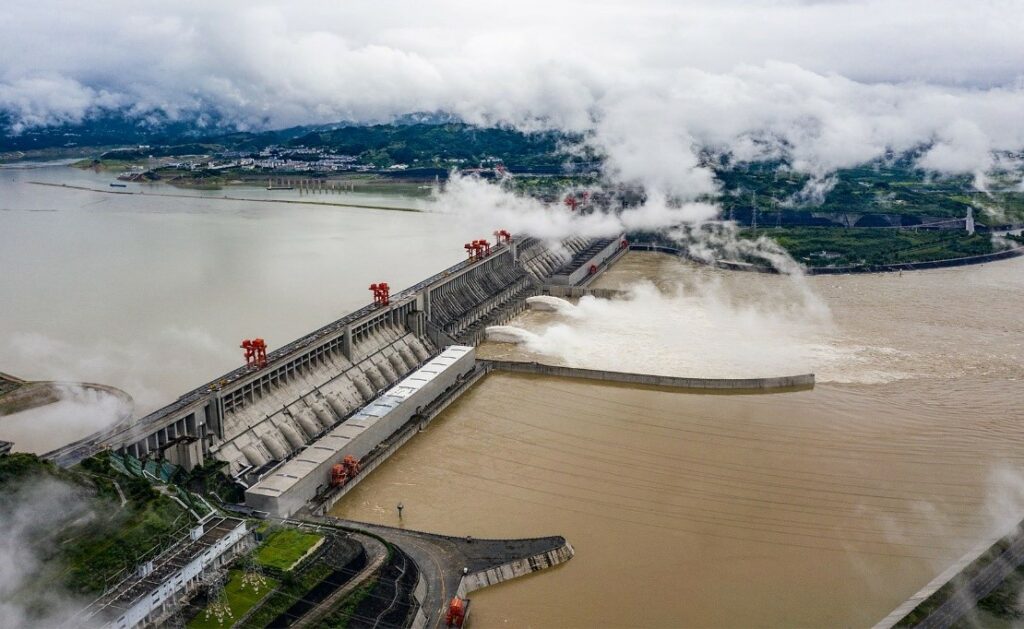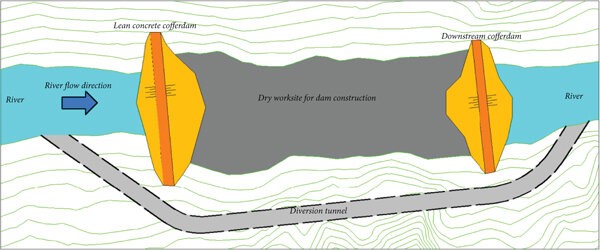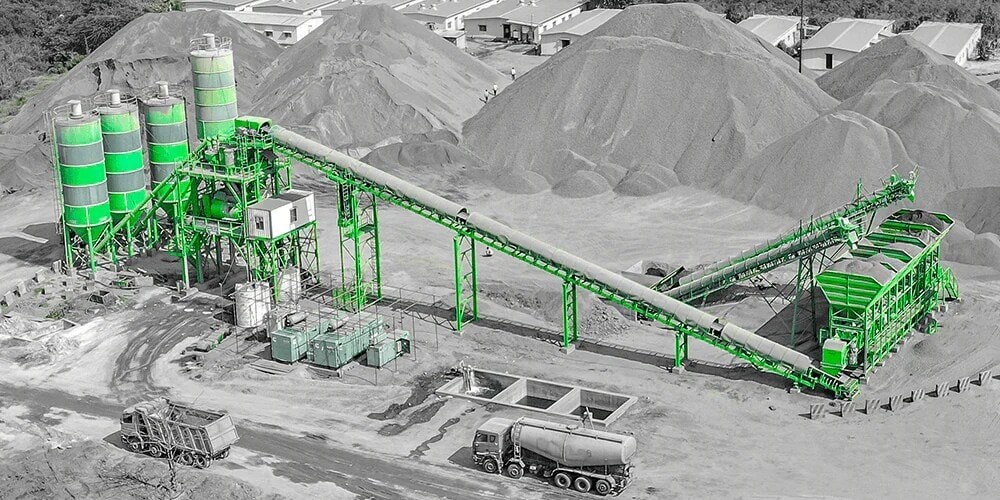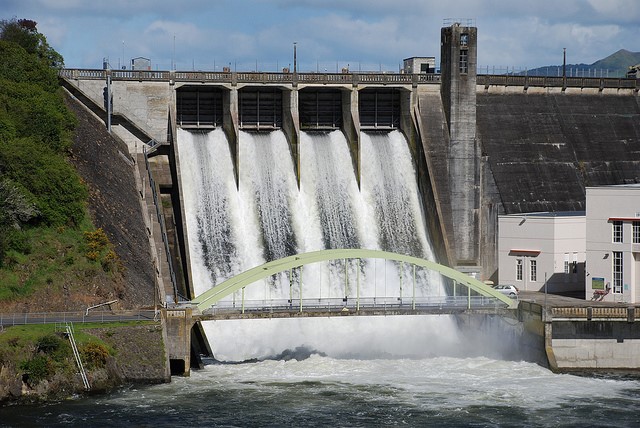Dams are hydraulic structures used to hold back water, forming a reservoir used as a water supply or to generate electricity, etc. It is one of the ways we control and engineer nature. The Three Gorges Dam in China is the world’s largest hydropower dam. It flooded a total area of approximately 156,000 acres of land when it was built, with 42 billion tons of water. The massive amount of water was enough to alter the earth’s rotation by an estimated 0.06 microseconds. So how are dams built despite their massive size and capacity?

The Three Gorges dam
How are dams constructed?
Dams are usually built between a water source like a river and a valley. The valley is later converted into a reservoir or an artificial lake using either water redirected from its natural source or elsewhere. Rivers are diverted using tunnels along the side of the dam or its foundations.
During the construction of these channels, soil is excavated and larger rocks are blasted with explosives to clear the path for water. For dams built across large flowing rivers, simply constructing channels to divert the water supply won’t be enough. Instead, dams intended to divert large rivers utilize dry construction pits built on one side of the river.

Combo of a cofferdam and redirecting channel to create a dry work site for construction
The dam construction then proceeds in stages where water is allowed to pass through openings in completed portions of the dams so the reservoir can then be filled.
Dams are either built on soil or rock foundations depending on the type of dam and how much water it is intended to support. The foundation must be rigid and strong enough to support both the weight of the dam itself and withstand the water pressure exerted on it. Since foundations are built below the ground, soft soil or rock pockets are sometimes found during construction. They are replaced immediately with stronger materials to ensure the dam’s foundations are as sturdy as possible. Then any fissures or cracks are filled up right away with grout to prevent water from leaking out once the dam is complete.
Going on to building the dam itself, you might be wondering where all the concrete comes from. For most dam construction projects concrete batching plants are built on site. This gives workers access to large quantities of ready-to-use concrete, which is transported to the construction site using either a system of conveyor belts or via trucks and cranes. This concrete is then poured into a mold made in the required shape of the dam. The mold is built up in layers of 3 to 6ft high. The pouring of concrete is done in layers because pouring all the concrete at once would take a long time for it to dry.

Figure 3; Concrete batching plant
After the dam is built, its reservoir can be properly filled up. It can take several years for the process to happen either naturally or with the help of pumping units. At this point, the water level behind the dam must not be at operational levels. The dam has to be tested first. Once construction is complete, engineers use the first filling as an opportunity to test the dam and see if it will hold. They closely monitor the filling to look for any deficiencies in the dam’s design or construction and safely address them.
Inspectors check for signs of seepage, cracking, or erosion. Repairs can be made to get the dam performing to its intended capacity. Dams also feature components specifically designed for safety, such as emergency spillways. During extreme events including excessive rainfall or snowmelt, massive volumes of water spill through the spillway and are diverted downstream in a controlled flow ensuring the main dam structure does not need to withstand the additional water pressure.

Spillways
Dams need to stand the test of time so they are never truly finished. Changing water levels around the world affect the operational conditions of these megastructures over time. Prolonged droughts can significantly reduce water levels in the reservoir behind the dam affecting its ability to serve its purpose
Whatever the case, dam operators and planners need to be ready to adapt and respond to any condition.
Important things to consider in the construction
Geological Conditions: Understanding the geological makeup of the site is crucial for determining the stability of the dam foundation and abutments. These conditions can include faults, unstable rock formations, and seismic activities.
Hydrological Studies: Detailed hydrological assessments are needed to analyze the flow characteristics of the river or stream, including peak flows, sediment transport, and variations in water levels throughout the year. This information is essential for designing spillways, outlet works, and reservoir operation plans
Materials and Construction Methods: The choice of materials and construction methods depends on factors such as dam type, site conditions, cost, and project timeline. High-quality materials and construction techniques are essential to ensure the structural integrity and longevity of the dam.
Emergency Preparedness: Dams are designed to withstand a range of natural and man-made hazards, but emergency preparedness is still essential. Emergency action plans (EAPs) are developed to outline procedures for responding to emergencies such as floods, earthquakes, or dam failures, including evacuation routes, warning systems, and communication protocols.

